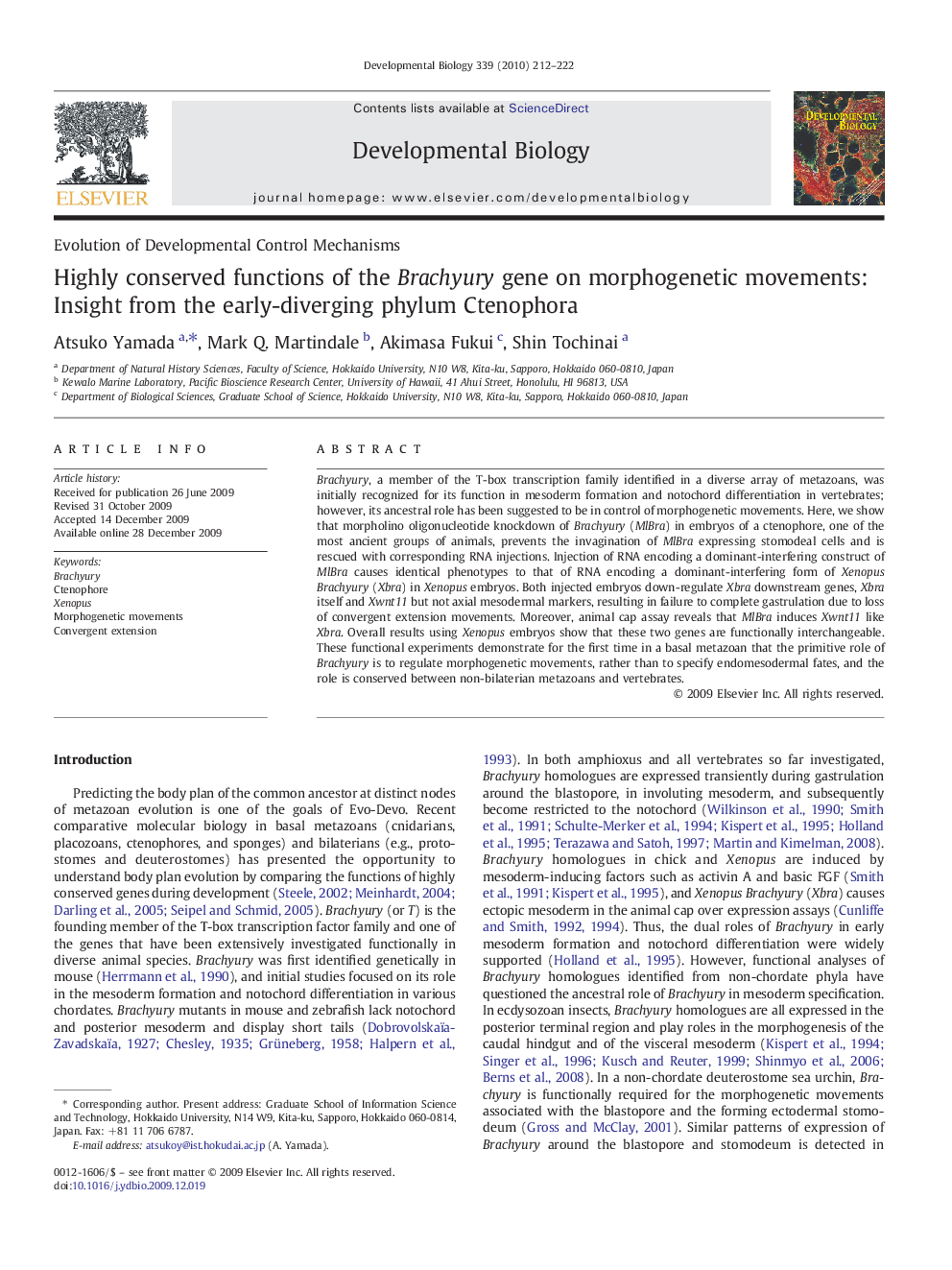| Article ID | Journal | Published Year | Pages | File Type |
|---|---|---|---|---|
| 10933155 | Developmental Biology | 2010 | 11 Pages |
Abstract
Brachyury, a member of the T-box transcription family identified in a diverse array of metazoans, was initially recognized for its function in mesoderm formation and notochord differentiation in vertebrates; however, its ancestral role has been suggested to be in control of morphogenetic movements. Here, we show that morpholino oligonucleotide knockdown of Brachyury (MlBra) in embryos of a ctenophore, one of the most ancient groups of animals, prevents the invagination of MlBra expressing stomodeal cells and is rescued with corresponding RNA injections. Injection of RNA encoding a dominant-interfering construct of MlBra causes identical phenotypes to that of RNA encoding a dominant-interfering form of Xenopus Brachyury (Xbra) in Xenopus embryos. Both injected embryos down-regulate Xbra downstream genes, Xbra itself and Xwnt11 but not axial mesodermal markers, resulting in failure to complete gastrulation due to loss of convergent extension movements. Moreover, animal cap assay reveals that MlBra induces Xwnt11 like Xbra. Overall results using Xenopus embryos show that these two genes are functionally interchangeable. These functional experiments demonstrate for the first time in a basal metazoan that the primitive role of Brachyury is to regulate morphogenetic movements, rather than to specify endomesodermal fates, and the role is conserved between non-bilaterian metazoans and vertebrates.
Related Topics
Life Sciences
Biochemistry, Genetics and Molecular Biology
Cell Biology
Authors
Atsuko Yamada, Mark Q. Martindale, Akimasa Fukui, Shin Tochinai,
